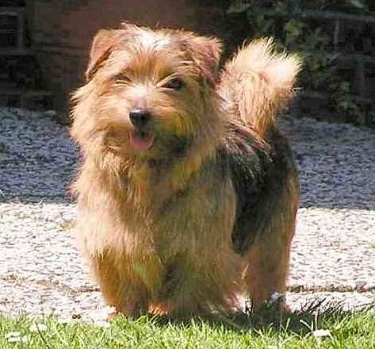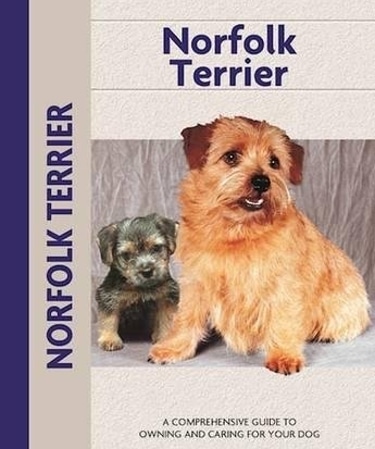
The Norfolk Terrier is a small and active dog. He is sturdy, compact and fearless – yet never aggressive. The Norfolk Terrier is one of the smallest working terriers developed in England as a ratter and to hunt foxes. He was originally known as a Norwich Terrier, but as a separate variety with the most notable difference being his dropped ears.
The other variety – which is known today as the Norwich Terrier breed has pricked ears. England officially recognized these two as separate breeds in 1964 and the American Kennel Club did so in 1979. Over the years, the Norfolk Terrier and the Norwich Terrier have developed into two very distinct breeds.
Norfolk Terriers are charming, affectionate and thrive on human companionship.
Height: The height of the Norfolk Terrier at maturity is approximately 10 inches (25cm). Female Norfolk Terriers are usually slightly shorter.
Weight: The AKC breed standard weight for the Norfolk Terrier is 11-12 pounds (5 -5½ kg). for the majority of these dogs.
Coat Type: Norfolk Terriers have a double coat. The straight, harsh and wiry outer coat is protective and the undercoat is soft and dense. The length is approximately between 1½ to 2 inches long. The Norfolk Terrier’s coat lies close to the body. While no trimming is required for the Norfolk Terrier, it should be tidied – particularly the top of the head, elbows, around the feet and the tail.
Color: According to the AKC, Norfolk Terriers can be “All shades of red, wheaten, black and tan, or grizzle.” In addition, the AKC states “dark points permissible” and “white marks are not desirable.”
Temperament: The Norfolk Terrier is fearless, courageous, energetic and affectionate. He is never aggressive, instead the Norfolk Terrier has a characteristic balanced and easy-going temperament. The Norfolk Terrier is a loyal companion and excellent with children. He is exuberant and playful. The Norfolk Terrier is generally easy to train and responds best to positive methods. Norfolk Terriers do not like to be left outside for long periods – they thrive on human companionship. If left outside for a long time, they may become bored and dig or bark excessively. The Norfolk Terrier should be taken on daily walks or for outdoor play. This breed does well with other pets in the household, although he should be supervised with smaller animals such as hamsters, gerbils or guinea pigs as he may view them as vermin prey.
Health Concerns: The Norfolk Terrier is a generally a very healthy breed. The average life span of a Norfolk Terrier is between 12 – 15 years.
Special Interest:
• The Norfolk Terrier is among one of the smallest working terriers.
• The American Kennel Club officially recognized the Norfolk Terrier as a separate breed in 1979.
Classifications:
AKC: Terrier Group
ANKC: Group 2 – Terriers
CKC: Terriers
FCI: Group 3 – Section 2 Small Sized Terriers
KC: Terriers
NZKC: Terriers
UKC: Terriers
 Kennel.com – Complete Guide to Dogs The Dog Lovers Guide
Kennel.com – Complete Guide to Dogs The Dog Lovers Guide
 Norfolk Terrier
Norfolk Terrier